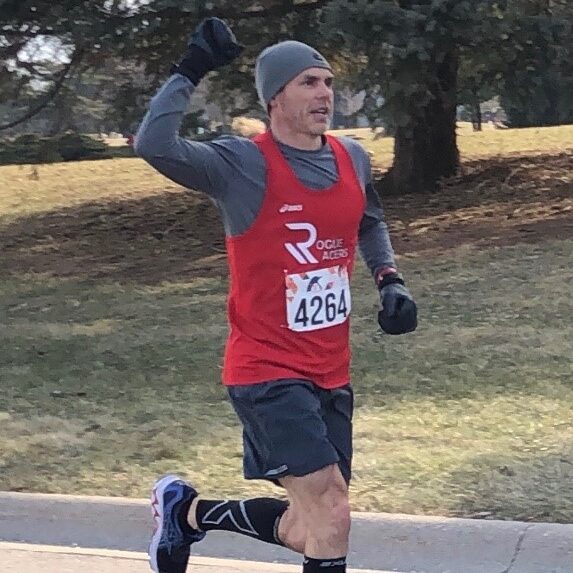When I decided to train for my first marathon back in 2010 at 32 years of age, I had no idea how it would forever change my life. At that time, my only goal was to finish a marathon and I hoped to do it in less than 4 hours. Why 4 hours? Somebody once told me that finishing a marathon under 4 hours is considered “pretty good”. Sounded like a good enough reason to me so I made it my goal.
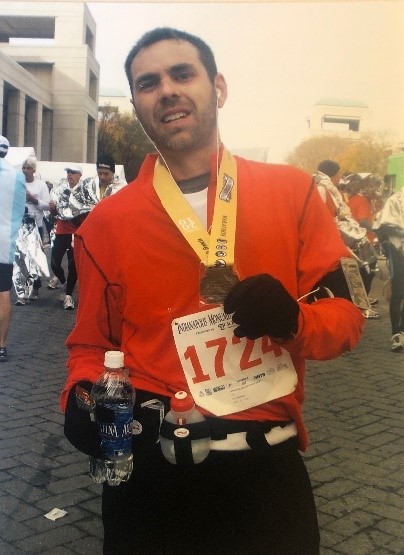
Being entirely new to running, I followed a basic 16-week beginner training program (35-40 miles per week) that I found online and committed myself to the plan. The program led me to a 3:37:51 finish in my first marathon in Indianapolis (looking back on it now, I have no idea how!). As I crossed the finish line, I was overwhelmed with an incredible feeling of accomplishment (and relief!) that is difficult to describe in words. The high was so great that I immediately wanted to do it again.
And so, the addiction began.
Being competitive by nature, not only did I want to run another marathon but I wanted to finish the next even faster. Still being ignorant to the sport, I followed the same program again but just ran faster during my training. Makes sense, right? Wrong. Despite my extra efforts, I finished my second marathon in 3:47:44 and my then my third in 3:40:12. Two failed follow up attempts to PR. Had I reached my potential or was I doing something wrong?
After my third marathon, I decided to challenge myself to qualify for Boston (BQ). At that time, my PR of 3:37:51 was far from the qualifying time of 3:10 needed for my age group. I realized it was time to read up on the sport and how to properly train for a marathon. I learned about heart rate training and the different workouts necessary to become a more efficient runner. While the science made sense to me, I can’t say I fully adopted all aspects of the training philosophy right away. I incorporated the speed workouts into my training immediately but I still had the competitive mentality that “more is better” so I ran my long runs faster than prescribed and, even worse, I ran my “recovery” runs too fast. What I didn’t know then that I know now is this is a recipe for disaster!
And that is exactly what happened in my fourth marathon. After getting through the first 14 miles I was on pace for a 3:12 finish and starting to have visions of myself qualifying for Boston when suddenly my hamstring seized up and brought me to a screeching halt. Devastated, but determined to finish the race, I managed to walk-run through the rest of the race and finished in 3:48:54. As I reflect on my running career, this is one of the moments I always remember; I was very emotional after that race. For the first time in my running career, I truly felt disappointed, frustrated, defeated, and down-right crushed. In my mind, I had failed tremendously.
I took some time off from running after that marathon. I needed to let my torn hamstring (and my soul) heal. I started swimming, cycling, and working out more and ran less. I planned to compete in triathlons (ultimately an Ironman), but I never got to that point because I didn’t feel satisfied with myself and where I left my running career. After a 6-month hiatus from running, I was back. Not to qualify for Boston, but to prove to myself that I could do better than a 3:37 finish.
I picked up a copy of Pete Pfitzinger’s Advanced Marathoning book, read it all the way through, and followed the 18-week (50-55 miles per week) plan. I ran my next marathon in 3:19:24. This finish was a major turning point for me. Not only was it a huge PR, but I proved to myself that I was capable of running faster. More importantly, I realized that training properly makes all the difference. During the high after this race, I had my first fleeting thought of maybe one day running a sub 3-hour marathon.
With my sights still set on Boston, I followed the Pfitzinger program again and entered another race. I kept pace all the way to mile 23 before my Boston dream died as my foot and calf cramped up. After a few stops to stretch them out, I finished in 3:18:02; missing the cut off by 8 minutes.
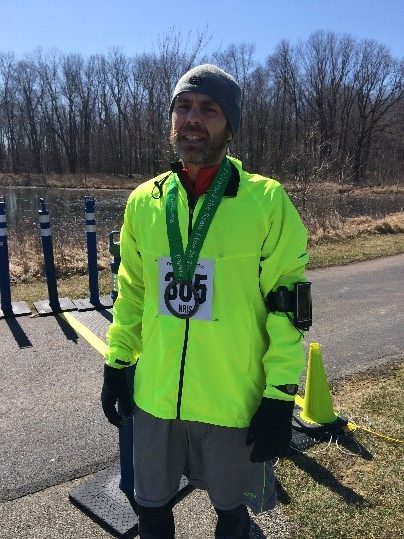
Determined to get my Boston jacket, I signed up to race another marathon 5 weeks later. This could either turn out really well or go horribly awry depending on how well I could recover in that short time. I carried pace through 24 miles before I started feeling my muscles twinge. I knew that the cramps were imminent, I just needed my body to hold up another 2 miles to the finish. Luckily, it did and I finished in 3:06:52. After three attempts, I finally qualified for Boston!
I am generally pretty critical of myself and don’t always fully appreciate my successes, but in that moment, I allowed myself to be proud of my accomplishment. I had fought back from my hamstring injury and persevered to reach my goal. I was heading to Boston!
Riding the high of my first BQ, the idea of running a sub 3-hour marathon crept back into my mind. After all, I was only 7 minutes away! Then I reminded myself that I would need to run about 20 seconds faster per mile than what I just did, and that realization quickly scared the idea away.
After being accepted into the 2016 Boston Marathon in September, I ran Columbus in October to try and beat 3:05 (which was the fastest Boston qualifying time for the youngest age group). I was on pace to come in under 3:05 before I cramped at 23 and finished in 3:08:40. This marked the beginning of my marathon cramping struggles.
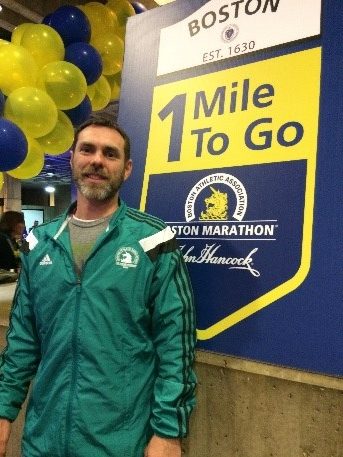
I ran Boston in 2016 and before I made the trip, my plan was to only run it once. The experience before the marathon was amazing. The city is packed full of runners—Boston Marathon jackets as far as the eye can see—and it was the first time I ever felt part of a larger running community. Everyone at Boston shares the same passion for running. Everyone “gets it”—which makes all the hoopla that weekend very special. Unfortunately, the race itself didn’t go well for me. I started out too fast, the course was much hillier than I anticipated, and it was really hot that day. I made it through 17 miles before cramping. I walk-ran the rest of the way to finish in 3:57:08. I was extremely disappointed in my performance. I tanked at Boston.
Immediately, I wanted a do-over. Boston kicked my butt and I didn’t like that feeling. I needed to run it again so I signed up to run Cleveland only a few weeks after Boston to improve my qualifying time and secure my 2017 entry. By the next Boston Marathon, I would age up which allowed me 5 extra minutes on my qualifying time. Now I only needed a 3:15 to get back. Should be easy, right? Wrong again. This is where my story starts repeating itself and I begin living out the definition of insanity as I chased another BQ. From May 2016 through May 2018 (2 full years), I ran 5 more marathons ranging from 3:12:58 to 3:53:32. I battled cramping in every marathon I ran. Every race turned out the same. Kris is on pace to PR. Kris cramps. Kris gets mad. Wash. Rinse. Repeat. Despite my efforts of modifying my fluids, nutrition, training, and race strategy, I could not overcome my cramping issues. I was in a rut that left me frustrated and seriously contemplating giving up the sport.
But I didn’t. These “failures” kept driving me. I was not going to give up on my goal. I simply needed to change what I was doing. I needed to break the cycle.
Even though I had managed to grab a couple more BQ’s along the way, I knew they were not fast enough to get me back to the starting line in Hopkinton. After officially being rejected from Boston in 2017 and 2018, I decided that instead of giving up, I would strive for the dream of running a sub-3 marathon (bold move, I know). I figured if I set my target higher and came up short, then worst case I would get a BQ good enough to get me back to Boston.
Somewhere around this time is when a mutual runner friend informed me about Rogue Racers and suggested the group may be what I needed to get me over the hump. I perused the website and seriously considered joining, but to be honest I didn’t think the time was right for me.
And so, I went a different direction.
I began working with a running coach to help me achieve the sub 3. He taught me more about the importance of heart rate training and most importantly, he reminded me—forced me—me to keep my easy days easy. He told me that I ran too hard too often, thus never giving my body time to recover. After 20 weeks of training, I had my sights set on the Toledo marathon. I felt confident and ready to get my sub 3! Until, two days before the race I got sick. I wasn’t able to eat the entire weekend before the race. Foolishly, I still tried to run the race but after 10.5 miles I was fading and had to drop out. I just didn’t have the energy (not surprisingly!).
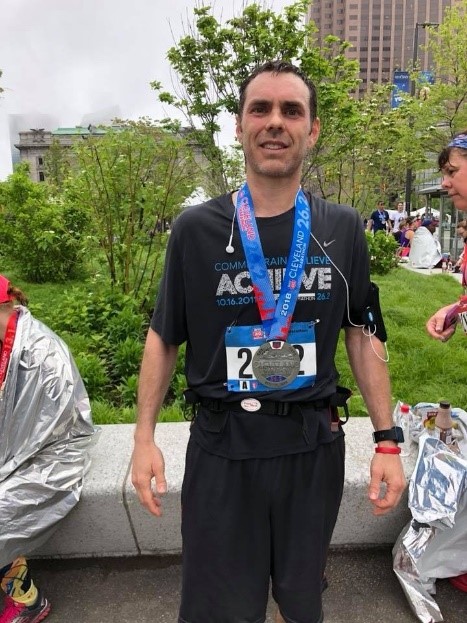
I ran Cleveland the next month but decided to not go for the sub-3 and instead just get a BQ so I could return to Boston. I finished in 3:08:12 after cramping late in the marathon. Still, that finish gave me a 7-minute cushion on my BQ time which meant I was all but guaranteed entry. I was happy that I was going back to Boston, but disappointed in my race result because I had once again squandered an opportunity for a PR due to muscle cramps.
At the finish line of Cleveland, another running friend of mine told me she was joining Rogue. While I had been wrestling with the idea of joining ever since my first inquiry, it was at the finish line that I came to the conclusion I had reached my potential as a solo runner. I reached a plateau that I could not surmount alone. I needed help. After nearly 8 years of running solo, I decided to join Rogue Racers.
My first official run as a Rogue Racer happened to be a 5K race. I finished a minute or so behind the other members in my debut race, and I didn’t like that feeling. My competitive juices awoke that morning and I became intensely inspired to take my running “hobby” to the next level. I wanted to be doing what they were doing.
Week after week I made it a priority to meet up with Rogue for long training runs on Saturday morning and speed sessions on Tuesday nights, and week after week I noticed incremental improvements to my fitness level. The sheer presence of the group pushed me to complete the workouts even when I felt like I had nothing left in the tank. I shaved down my 800’s and my mile time, and the long run pace gradually became more comfortable. I increased my training mileage from 50 miles per week to 65 miles. I felt faster and stronger each week. The power of group running is truly amazing and it’s exactly what I needed!
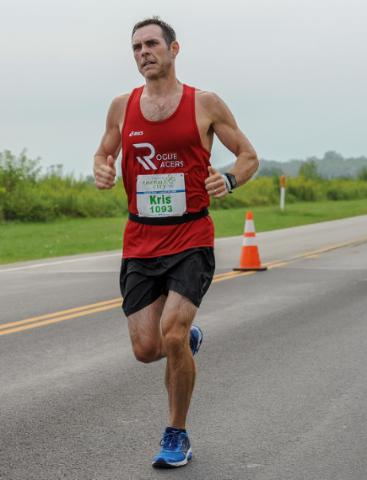
I ran a few races after only a couple months of running with Rogue to validate my training. I PR’d my half marathon by 4 minutes and PR’d my 5K time by 30 seconds. Running was becoming fun again! The dream of achieving the elusive sub-3 hour suddenly seemed not so far out of reach. My new PR times indicated I had the capability. My confidence as a runner had reached an all-time high. Simply training alongside others who were running the paces and crushing their races made it feel so much more attainable. In some weird way, when I was training with Rogue leading up to the Columbus Marathon, I already felt like I was a sub-3 marathoner but without the official sub-3 finish yet. They made me believe it was possible. They made me believe in myself.
The morning of the Columbus Marathon I felt great and ready to start running. I envisioned myself crossing the finish line with a “2” in the front of my time and I didn’t feel as nervous as I normally do before a race. Is this what confidence feels like? The gun went off and began my journey to my first sub-3 finish. My plan fell apart in the very first mile. I had an issue with my watch and ended up running the first mile 20 seconds faster than planned. I had started out too fast and instantly became worried about my legs at the end. I dialed it back for mile 2 trying to “make up” for my mistake even though I knew it doesn’t quite work that way. By mile 4 or 5 I had settled into the race and found my groove. I made it through the first half feeling good but for some reason I was having trouble holding consistent splits. My pace was fluctuating 10-15 seconds each mile (as much as 30 seconds in some cases) but despite the mistakes I had made up to that point, I was still out in front of the 3-hour pace group and on track for my first sub-3 finish! But then, 20 miles in, the muscle cramps struck again. Knowing that I had some cushion built up, I stopped for about 10 seconds, stretched, and started running again. I was concerned at this point, but popped two salt tablets in a desperate attempt to stave off any further cramping. That seemed to work until mile 23 when I cramped for the second time. Once again, I stopped for around 10-15 seconds and stretched. I popped a few more salt tabs headed off again. This time it took me a bit to get back up to pace but I managed to do so, fighting off muscle twinges along the way. At this point I knew it was going to be close at the finish but I kept pushing toward it, trying to maintain a balance between speed and not cramping, which is not an easy task. As I approached the final turn to the finish line, I heard the race announcer say “30 seconds to the 3-hour mark”. Not knowing exactly how far I had left (because my watch was already over the 26.2 mark), I just picked it up and dashed to the finish line. I crossed the line, stopped my watch, and looked down at a 3:00:20 finish. I had fallen short by 21 seconds.

After Columbus, I was flooded with conflicting emotions. Devastated that I could not celebrate the sub-3 finish and devastated that I did not reach my goal. On the other hand, I had just PR’d my marathon time by 6 and a half minutes and ran a 3-hour marathon. All things I should be proud of I know, but those 21 seconds…those 21 seconds ate away at me and became my new source of motivation. The next race on my calendar was Boston in April. I didn’t have confidence that I could get a sub-3 finish on that course, and not wanting to wait until the fall to try again, I signed up for the one-mile loop winter marathon (Warm Up Columbus) and crossed my fingers for good weather. This time around I trained for a 2:55 finish instead of 3:00. I thought this was fair since I only missed the 3-hour finish by 21 seconds. I continued to train with Rogue through most of the winter (when the trail and track weren’t covered in ice and snow!) and added even more strengthening exercises to my workouts in gym.
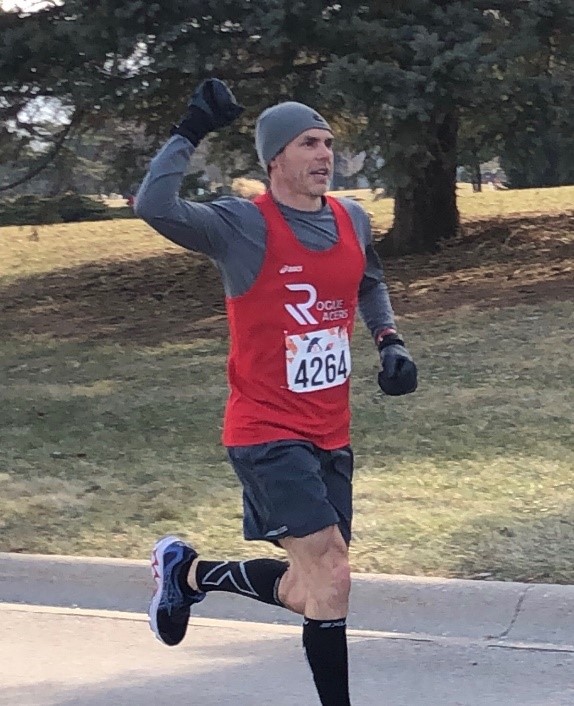
The day came to try again for the sub-3 finish. The weather conditions turned out to be ideal, 30 degrees, a light wind, and most importantly, no snow or ice. I had the same conservative plan going into this race as I did for Columbus: start off slower than goal marathon pace and work up to it over the first couple miles before settling into a groove of even splits to the end. Another adjustment I made to my plan before this race was to significantly increase my salt tab intake, particularly in the second half. This time I started the race off right and followed my strategy perfectly. I felt smooth and strong during this race. My family was there to support me and many fellow Rogues were out there too. This race felt much different than races in the past. I felt like I was in the zone the entire race; it felt surreal-like. I was hitting my splits consistently and feeling unstoppable. Around mile 20, I started to feel the slightest of twinging in my muscles. Do I keep going or stop to stretch? I decided to persist on and instead pop a salt tab earlier than planned. In that moment, I remembered my running coach had once told me if I felt the cramps coming on, I should try shortening my stride to work the fatigued muscles differently. And that is exactly what I did for the last 6 miles. My pace only dropped by about 5 seconds per mile, which was fine by me. As I started my 26th lap on the course, I knew I could make it to the finish without cramping. And because I didn’t cramp, I figured I had at least a 2-minute cushion. The adrenaline was starting to flow. There was nothing stopping me now from getting my sub-3 finish. For the first time in 4 years, and 10 marathons, I was going to make it to the finish line without cramping! As I approached the end, I saw my family, friends, and Rogue cheering me in. I started pumping my fist in celebration—I did it! Official time: 2:56:37.
When I crossed that finish line, all the prior disappointments, pain, and heartache were erased in an instant. All the struggles before that race made the reward that much sweeter. I realize now that it was all part of the journey. The “failures” along the way became the fuel that continued to drive me. They forced me to change what I was doing and to get smarter about my training, which ultimately led me to accomplishing something that, not so long ago, seemed so incredibly impossible. I am a true believer that hard work eventually pays off as long as you remain persistent and focused on the goal.
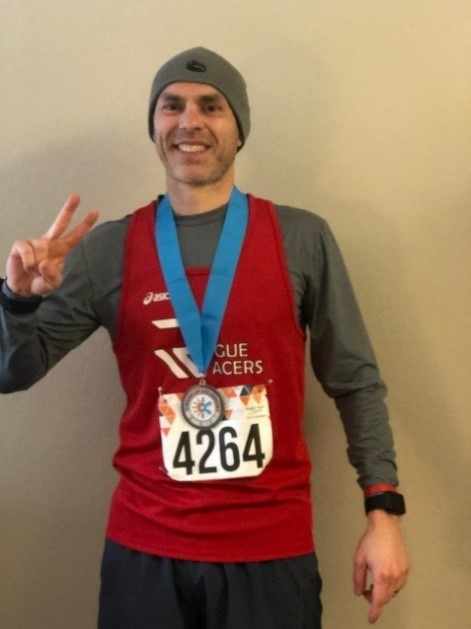
Looking back on it now, my only regret is not joining Rogue earlier. Before joining, I had not PR’d my marathon in 4 years. In less than a year with Rogue, I PR’d it twice and improved my marathon time by 10 minutes! I will be forever grateful to the group and I am certain I would’ve never run a sub-3 without them. I used to have a love-hate relationship with running, but I can no longer say I hate anything about the sport or my journey. Running has brought me so much fulfillment and sense of purpose to my life outside of work and family. It has also brought me many new friendships. I love the grind and I love the routine, and now I am enjoying it even more as part of the group. In a way, I feel like my running journey is just now beginning. Rogue continues to inspire me to keep pushing myself and I am excited to see where I go from here. Most importantly, they make me feel a little less insane about my addiction. All runners are a bit crazy, but now I have company! One of my favorite quotes definitely applies to my journey as a runner, “If you can’t stop thinking about it, don’t stop working for it.”


